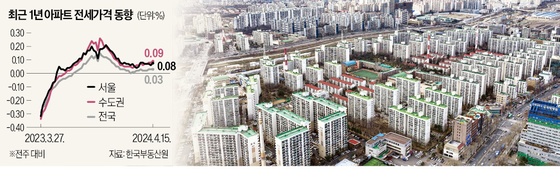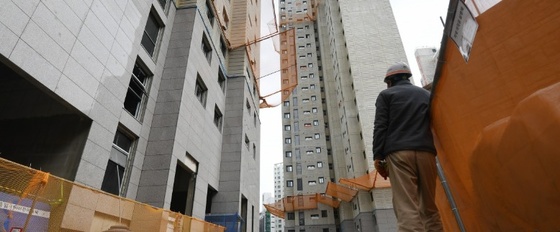입력2006.04.02 11:11
수정2006.04.02 11:15
[ The Tigers are cheering on a U.S.Recovery ]
The economies of Southeast Asia have endured one of their worst years since the end of World War II.
Now, hopes for growth are pinned on the U.S. recovery.
Many governments have recently reported their respective countries' real gross domestic products for the fourth quarter and total 2001.
The numbers have been dismal, leading institutional investors such as Calpers to pull out of Asian equity markets.
On Feb.18, Indonesia said its economy fell 1.2% in the fourth quarter, compared with the third.
For the year, real GDP rose 3.2%, less than expectations and not nearly fast enough to create many jobs for Indonesia's population of 207 million.
Then on Feb. 22, Taiwan said its economy fell 1.9% in the fourth quarter, compared with a year ago.
For the year, real GDP was also down 1.9%, the first annual drop in output in the postwar era.
Malaysia reported a 0.5% fall in its real GDP in the fourth quarter and grew only 0.4% for the whole year.
The only major Southeast Asian economy bucking the trend is the Philippines, where real GDP grew 3.4% for all of 2001.
Southeast Asia has stumbled badly because global demand for its major high-tech exports, such as semiconductors, was slammed by the U.S.-led global slowdown.
In response, central banks have cut interest rates, in some cases quite sharply.
But governments are mostly counting on a turnaround in world growth to boost their export growth and, thus, lift overall output and jobs.
This forecast depends greatly on a rapid U.S. recovery.
In particular, Southeast Asian exporters are hoping that the U.S. capital-goods sector picks up this year.
...........................................................................
[ 미국 경기회복으로 기운차리는 호랑이들 ]
동남아시아 경제는 제2차 세계대전이 끝난 이후 최악의 해중 하나를 견뎌냈다.
이제 미국경제 회복으로 성장에 대한 희망이 꽂혀졌다.
최근 많은 국가들이 지난해 4분기 및 2001년도 실질 국내총생산(GDP) 성장률을 각각 발표했다.
캘퍼스같은 기관투자가들이 아시아증시에서 발을 뺄 정도로 이들 수치는 참담했다.
2월18일 인도네시아는 작년 4분기에 경제규모(GDP)가 전분기에 비해 1.2% 줄었다고 밝혔다.
작년 전체로는 3.2% 성장하는 데 그쳐 기대에 못미쳤다.
이 성장률은 인도네시아의 2억7백만명의 인구에게 많은 일자리를 제공하기에 충분할 정도로 높지 않다.
그리고 2월2일에는 대만이 작년 4분기 경제규모가 1년전보다 1.9% 감소했다고 발표했다.
작년 한해 전체로도 실질 GDP가 1.9% 줄어 전후(戰後) 첫 생산감소를 기록했다.
말레이시아는 작년 4분기 경제성장률이 마이너스 0.5%를 기록하고 작년 한햇 전체로는 경제가 0.4% 성장하는 데 그쳤다.
동남아 주요국중 이같은 추세에서 벗어난 유일한 나라는 필리핀으로 작년 한햇동안 실질 GDP가 3.4% 증가했다.
동남아시아는 반도체 등 주력 첨단 수출품에 대한 세계 수요가 급감하면서 혹독한 침체를 경험했다.
세계수요가 급감한 것은 미국 주도의 세계 경기둔화 탓이었다.
이에 맞서 중앙은행들은 금리를 내렸으며 어떤 경우에는 금리를 대폭 인하했다.
하지만 각국 정부는 세계경제 성장을 목놓아 기다리고 있다.
세계경제가 성장해야만 수출이 늘어나고 그로 인해 전체 산업생산및 일자리도 확대될수 있기때문이다.
세계경제 성장은 미국경제의 빠른 회복에 크게 달려 있다.
특히 동남아 수출업체들은 올해 미국 자본재 부문이 회복되기를 바라고 있다.


!['휘발유값 1700원'…국제 유가, 전쟁 끝나도 오른다? [노유정의 의식주]](https://img.hankyung.com/photo/202404/01.36475420.3.jpg)


![하루 만에 550조원 증발…실적·물가 압력에 기술주 투매 [글로벌마켓 A/S]](https://timg.hankyung.com/t/560x0/photo/202404/B20240206081554930.jpg)


![[단독] "경영보다 돈"…아워홈 매각 손잡은 남매](https://timg.hankyung.com/t/560x0/photo/202404/AA.36472890.1.jpg)





